Automatically generate receipts from PayPal sales in Zapier
PayPal is an online payment system and a digital wallet that provides a safe and secure way to send and receive money online.
Let’s say that you would like to automatically send receipts to your customers once they make a purchase. We’ll connect Plumsail Documents and PayPal in Zapier to automatically collect data from PayPal sales, apply the data to our receipt template, and generate a PDF document.
As a result of this article, you will learn how to automatically generate receipts, invoices, and other documents based on PayPal data.
Note
PayPal integration is a premium feature in Zapier and requires a ‘Starter’ plan or higher.
Configure the Process
First, we’ll need to create and configure a Plumsail Documents process. Processes are a Plumsail Documents feature with an intuitive interface for creating documents from templates.
Use a pre-built template
Plumsail Documents offers dozens of templates to generate documents from. For this example, we’ll use the payment receipt template.
We will need to create a new process. First, register or log in to your Plumsail account. Once you’re in, go to the Processes section in your Plumsail account, click ‘Add process’, and select ‘Start from template’:
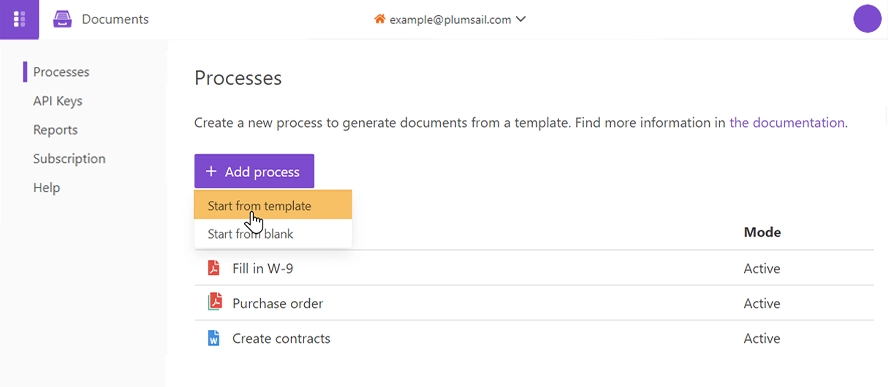
Alternatively, you can start with a blank process and upload your own document. As you proceed further with the article, you’ll have a chance to edit it and transform it into a reusable template by adding placeholders, also known as tokens.
Creating a process from a template, as shown in the picture, will redirect you to the document template library. Select the payment receipt template:
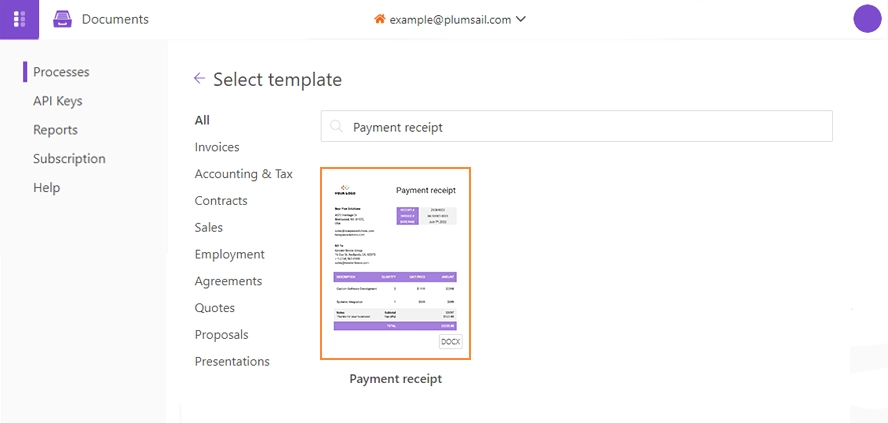
Name the process and click ‘Next’ to proceed. Then you’ll jump to the ‘Configure template’ step.
Configure the template
There are two internal steps that will guide you through the configuration:
Editor
Settings
Editor mode allows you to customize your document template according to your needs. All placeholders (everything in the curly brackets) will be dynamically replaced with PayPal data once the document is generated. Feel free to add as many placeholders as you’d like. Besides being easy to use, they also support advanced logic with conditions, charts, tables, and more. Learn how Plumsail Documents Word DOCX templates work here.
Before you can use the payment receipt template, it needs just a few tweaks — make sure you replace the logo and company credentials with yours.
Click ‘Edit online’ to change the logo and make any other changes you wish:
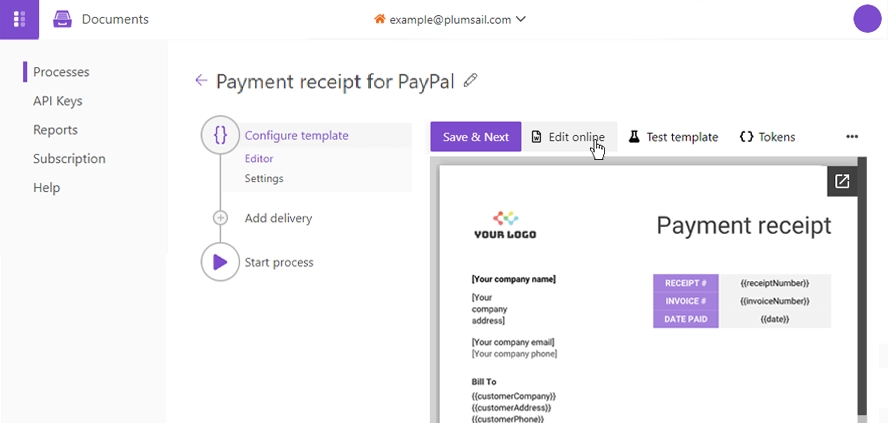
Click Save & Next to go to the Settings substep.
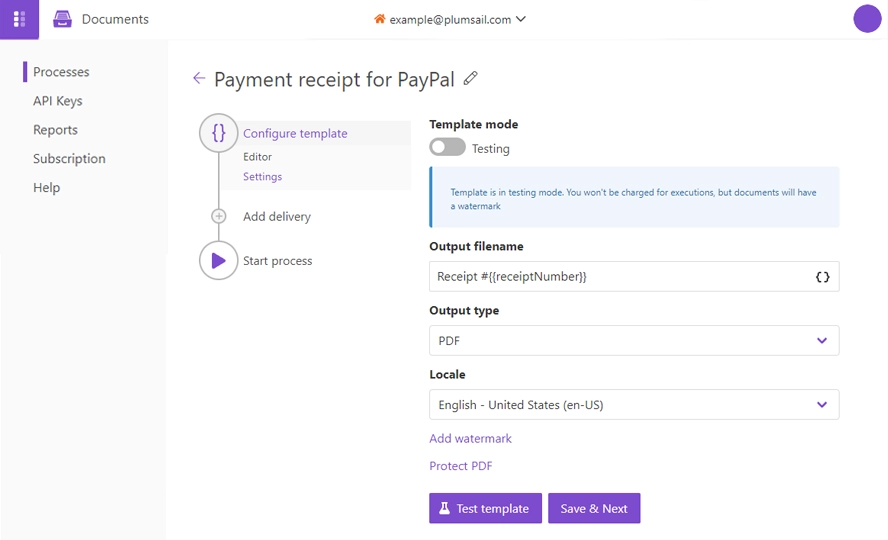
The settings step allows you to select the mode of the process, configure the filename and format of the document, and test your template. Let’s take a closer look at each of them.
Template mode
By default, it is set to Testing. There will be no charge for process runs in this mode, but result documents will be watermarked with a Plumsail logo. Change the mode to Active to remove the watermark.
Output filename
Make it personalized by using tokens. For example, we’ll use the {{receiptNumber}} token to define the output file name. Once the document is generated, we’ll receive a payment receipt with a name Receipt #1295-1029 (depending on the value of the token).
Output type
By default, it is set to the format of your template. The format in our case is DOCX. We’ll change it to PDF to generate PDF receipts from the Word template.
Hint
You can protect your final PDF document by setting a password, adding a watermark, or disabling some actions.
Test template
Once you’ve configured all the settings, you can test your template to see how the result document would look like.
When everything is done here, click on Save & Next to set up deliveries.
Delivery
We will deliver the result document as an attachment using Outlook. Feel free to use another delivery method.
Sign into your Outlook account, set the recipient email address and configure the message. As with the file name setting, you can use tokens to set up your delivery to make it dynamic. For example, you can use the customer’s email address in the “To” field, and their receipt number in the subject field:
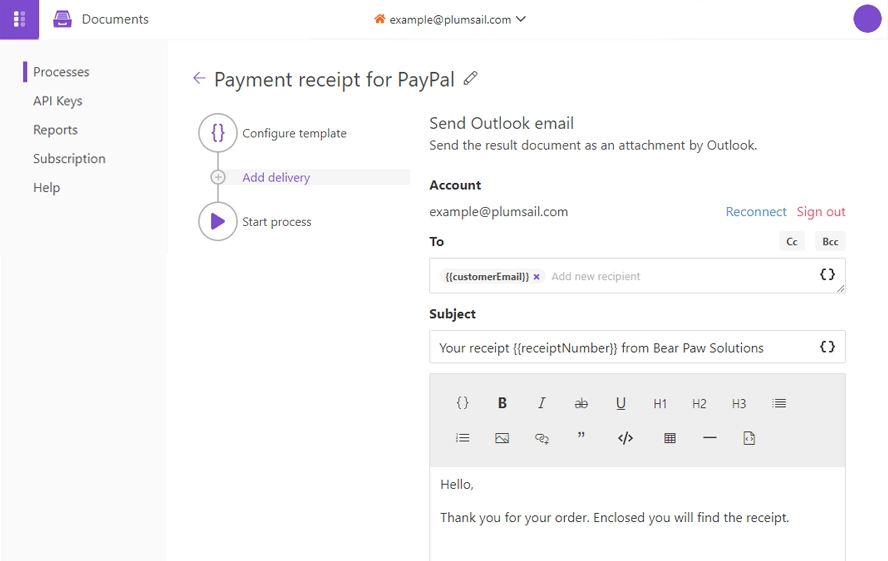
That way, once you get a new sale in PayPal, an email will be automatically sent to your customer’s email with their receipt number in the subject line, and the generated receipt attached to the email.
Start the Process
We will start our Process from Zapier.
Create a Zap
Zap is an automated connection between web services in Zapier. Below is a step-by-step explanation of how to create it from scratch.
This is how our Zap looks:

Successful Sale in PayPal
We need our Zap to be triggered every time we get a new sale in PayPal. Search for PayPal in Zapier and set the ‘Event’ to Successful Sale:
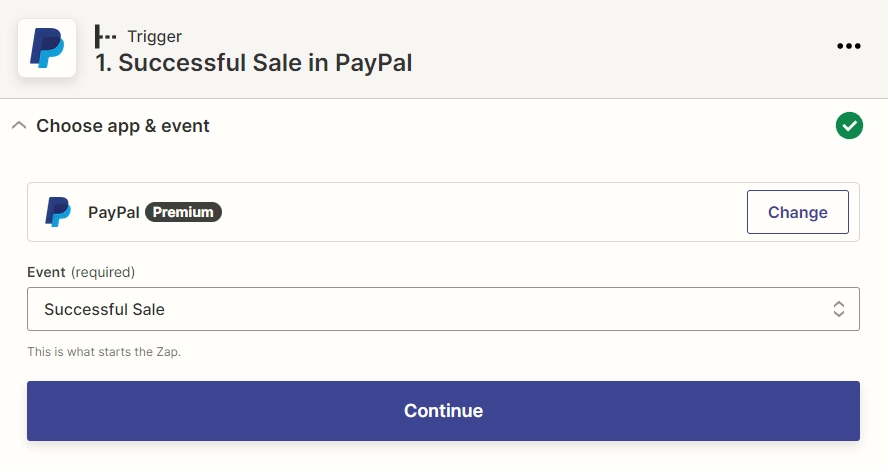
Click ‘Continue’ and copy your unique webhook URL:
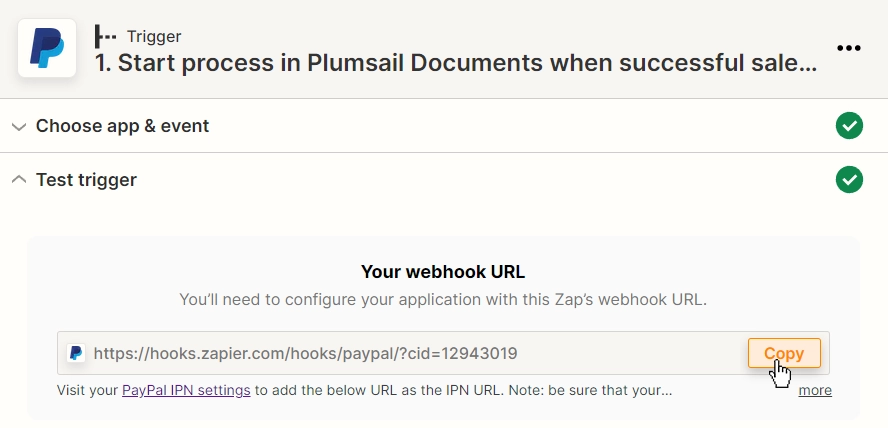
Visit your PayPal IPN settings, add the copied URL as the IPN URL, and select ‘Receive IPN messages’:
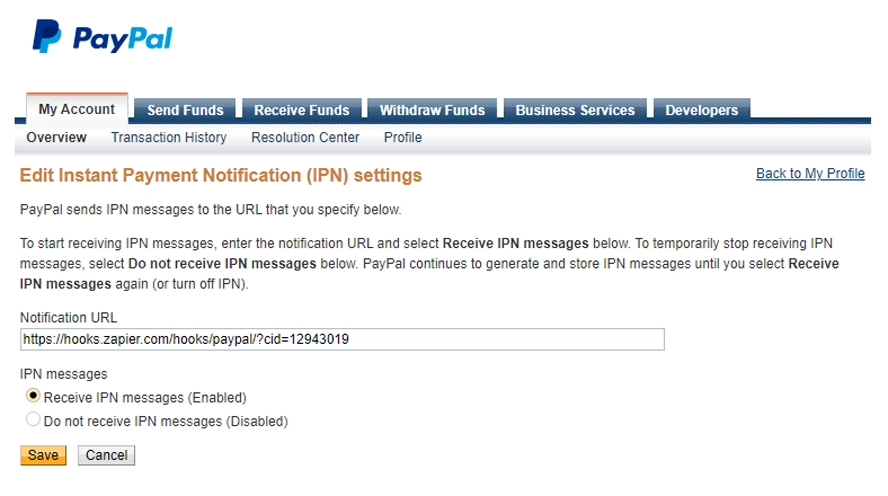
Start Process in Plumsail Documents
Once we have the data we need for document generation, search for Plumsail Documents and set the event to ‘Start Process’:
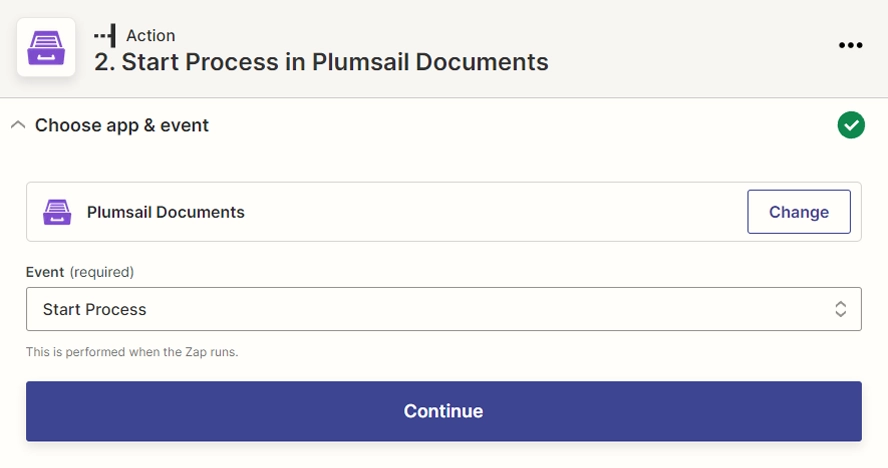
Sign in to your Plumsail Account from Zapier if this is your first Zap with Plumsail Documents.
Set up action
Select the process we created from the dropdown. You will see fields to fill out — they have the same names as the tokens from the template.
Use the results of the previous actions to fill them out:
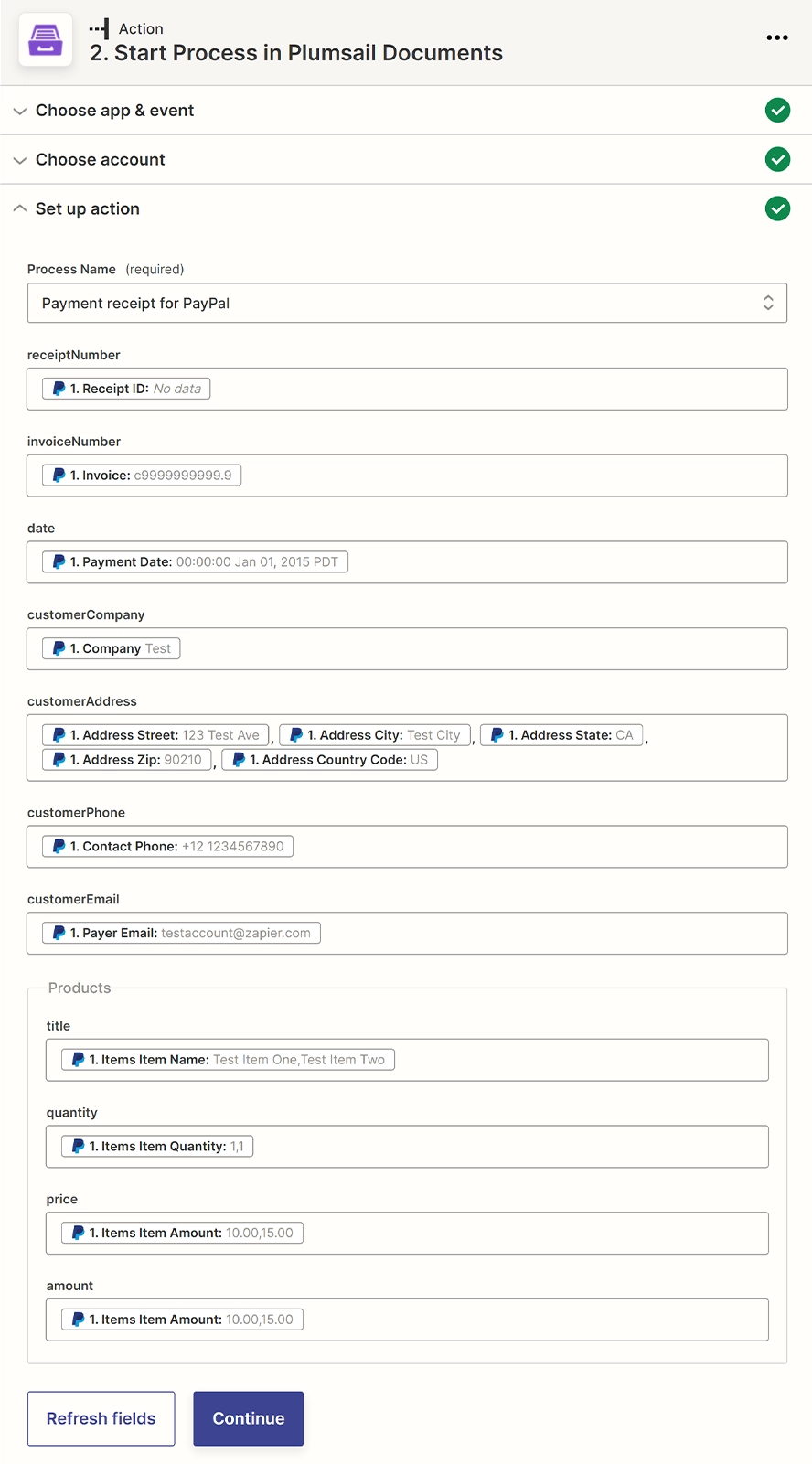
Our Zap is ready 🎉 Every time you get a successful sale, a receipt will automatically be generated and sent to your customer via Outlook.
See how the resulting file looks like:
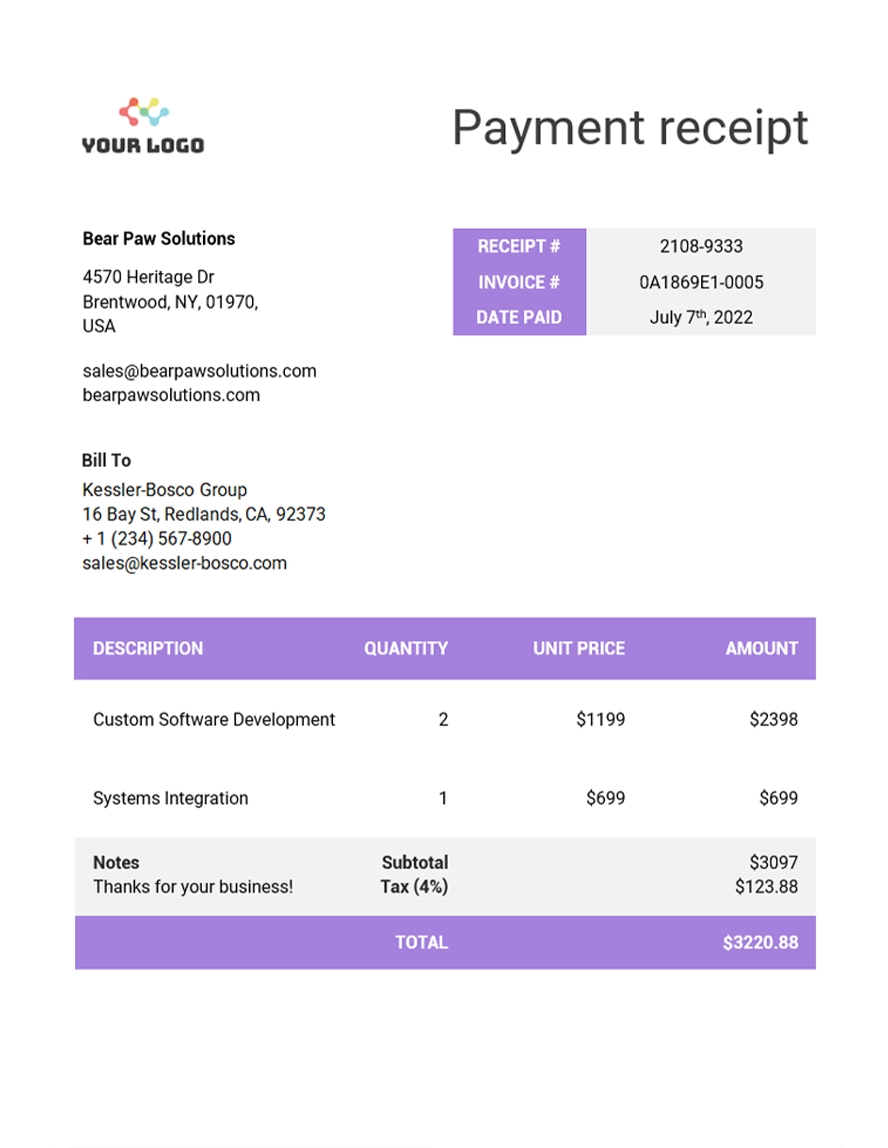
Conclusion
As you can see, it’s easy to automate the generation of documents based on data from PayPal sales. If you’re new to Plumsail Documents, sign up to get a free 30-day trial.
Hint
Use Plumsail Documents zap templates to start documents generation processes. All available zap templates are presented on this page.